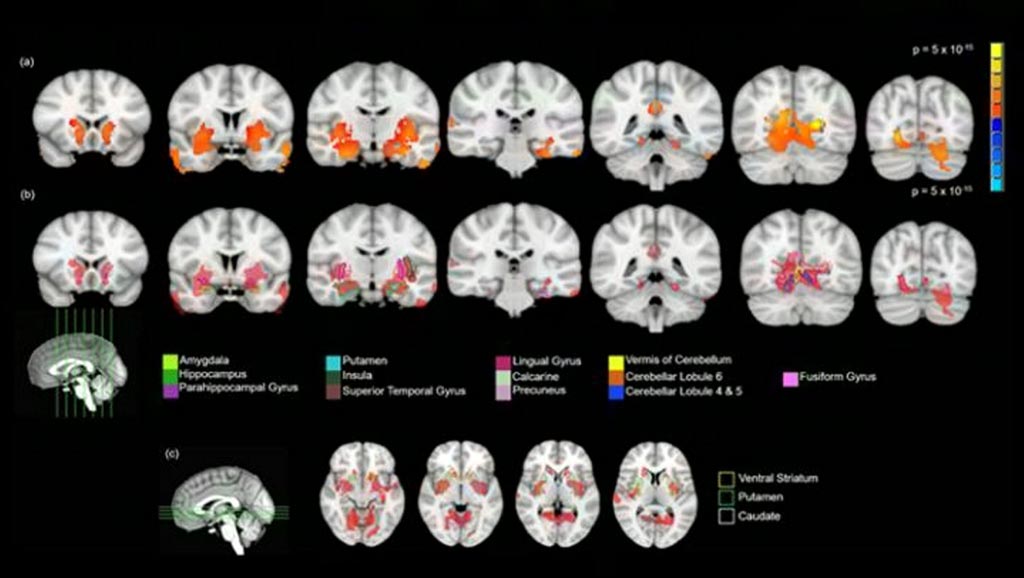Cannabis Causes Structural Brain Changes in Adolescents
By MedImaging International staff writers
Posted on 04 Jun 2019
A new study demonstrates that just one or two episodes of cannabis use during adolescence can result in changes in gray matter volume (GMV).Posted on 04 Jun 2019
Researchers at the University of Vermont (UVM, Burlington, USA), Trinity College Dublin (Ireland), Technische Universität Dresden (TUD; Germany), and other institutions used voxel-based magnetic resonance imaging (MRI) morphometry to compare GMV in 46 14-year-old adolescents who reported just one or two instances of cannabis use, and who were carefully matched Δ-9-tetrahydrocannabinol (THC)-naive controls. The MRI scans found that GMV was altered in relation to early exposure to cannabis.

Image: Regions showing greater GMV in 14-year-olds who smoked cannabis (Photo courtesy of the Journal of Neuroscience).
The changes were seen in parts of the brain that have greater expression of CB1 receptors. Extensive regions were identified in the bilateral medial temporal lobes as well as the bilateral posterior cingulate, lingual gyri, and cerebellum. An analysis of longitudinal data confirmed that the GMV differences seen were unlikely to precede cannabis use. GMV in the temporal regions of the adolescent cannabis users was also associated with poorer performance on the Perceptual Reasoning Index, as well as with future generalized anxiety symptoms. The study was published on March 6, 2019, in the Journal of Neuroscience.
“There was an impact on the striatum and the insula in 14-year-olds who only had one or two exposures to marijuana. Since this effect was not seen in a separate group of adolescents who had one or two exposures by the age of 16, it looks as if exposure, even very little exposure, to cannabis before the age of 14 may have significant toxic effects,” said study co-author Scott Mackey, PhD, of UMV. “It is precisely now, when the movement to legalize cannabis is sweeping across the continent, that we need more research to inform our decision-making about the regulation of cannabis.”
Adolescent cannabis use is a well-known risk factor for psychosis; cannabis use in adults with a history of psychosis is a risk factor for relapse of psychosis; and exposure to cannabis can produce mild psychotic symptoms, such as paranoia. It is not known, however, if cannabis use is the cause of these outcomes or the result of other underlying factors such as early adversity, stress, or genetic predisposition toward dopamine dysregulation. Data show that close to 35% of U.S. students in grade 10 have reported using cannabis.
Related Links:
University of Vermont
Trinity College Dublin
Technische Universität Dresden














.jpg)